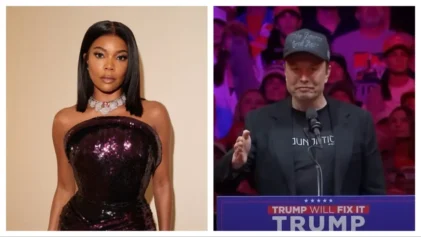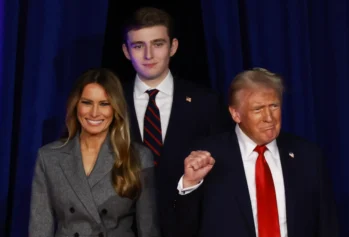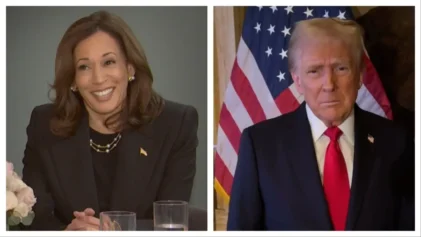
Each of those is worthy of discussion, but there is one critical issue that simply has not received the attention it deserves. This country is headed towards a constitutional crisis that could have disastrous long-term consequences.
The crisis is rooted in the fact that on Saturday, the day after the order was issued, a federal court in Brooklyn, New York, issued a stay blocking government attempts to remove from the U.S. any travelers who had already made it here. In response, just a few hours after the court’s decision, the Department of Homeland Security issued a statement saying, “President Trump’s executive orders remain in place — prohibited travel will remain prohibited, and the U.S. government retains its right to revoke visas at any time if required for national security or public safety.”
In case the DHS statement wasn’t clear enough, Stephen Miller, a Trump senior adviser (who, like Steve Bannon, has ties to white nationalism) told the Associated Press that nothing in the judge’s order “in any way impedes or prevents the implementation of the president’s executive order, which remains in full, complete and total effect.”
Since that time, at least four other federal courts have joined the Brooklyn court in issuing some type of stay order. In addition, at least five states — Washington, Massachusetts, New York, Virginia and Washington — are suing the Trump Administration over the ban. On Friday February 3, a Seattle federal judge issued a nation wide stay on the ban that had temporarily stopped refugees and citizen from seven countries from entering the United States. And yet today, almost a full week since the original court order, it is still not clear whether the Trump administration is obeying the courts. Although the Justice Department filled an emergency appeal and Homeland Security for now is honoring the judge’s stay the President took to twitter several times to challenge the judges authority.
The opinion of this so-called judge, which essentially takes law-enforcement away from our country, is ridiculous and will be overturned!
— Donald J. Trump (@realDonaldTrump) February 4, 2017
Thus, the impending constitutional crisis. What will the courts do if the Trump administration chooses to ignore the judicial branch? How would the courts enforce their orders if Trump refuses to do so? Trump continues to skirt the authority of the judicial branch giving instructions to Homeland Security that may run counter to the intent of the order, as visa holders within the seven countries are now attempting to complete their travel plans until there is some clarity on the travel ban.
I have instructed Homeland Security to check people coming into our country VERY CAREFULLY. The courts are making the job very difficult!
— Donald J. Trump (@realDonaldTrump) February 5, 2017
The question of enforceability is one that has plagued the court since this country’s early days. In 1803, Chief Justice John Marshall and the young Supreme Court — by far the weakest of the three branches — faced a difficult decision in a case involving Thomas Jefferson’s executive branch. A man named Marbury sued Jefferson’s newly appointed Secretary of State, James Madison. Marbury had been appointed by the outgoing president, John Adams, to become a justice of the peace, but Madison and Jefferson refused to honor the appointment because Marbury was part of a rival political faction.
The facts were on Marbury’s side, but if the court ruled against the government, it was already clear that Jefferson would ignore the order and the Supreme Court would have absolutely no means by which to force the president to do so. If the court ruled in favor of the government, in spite of the facts, then the court would reinforce its image as a weak and irrelevant institution.
So, Chief Justice Marshall found a third option. The court ruled that although the executive branch should lose, the case never should have been brought to the Supreme Court to begin with because the law that gave the Court jurisdiction in the matter was actually unconstitutional. By eliminating the Courts power in that specific case, Marbury v. Madison, Marshall established a more important power that has become ingrained in U.S. democracy: the power of judicial review. Through this power, the judicial branch can declare a law or executive action to be unconstitutional, an important aspect of the checks and balances between the three branches of government.
However, the court sidestepped a critical issue: What happens when the judicial branch issues a ruling that the executive branch absolutely refuses to enforce?
Perhaps the most controversial attempt to answer this question occurred after the 1954 Brown v. Board of Education Supreme Court decision that ended legal segregation in public schools. The court was fully aware that many states would resist the order to desegregate their schools and it wasn’t quite clear what the response of the federal government would be, given that President Eisenhower was far from being a civil rights champion. It was this concern regarding enforcement that led the court to use its infamously vague language, “with all deliberate speed,” in outlining how the government should proceed with desegregation.
The issue led to a crisis in September 1957 when nine students attempted to integrate Central High School in Little Rock, Ark. Governor Orval Faubus used the Arkansas National Guard to block the students from entering. The question became whether Eisenhower and the federal executive branch would enforce what had become the law of the land. If not, the Supreme Court did not have the power to force either the president or the governor to do so, other than with words on paper. The court could not physically escort the students into the school.
Eisenhower decided to enforce the court order by taking federal control of the Arkansas National Guard and by deploying the Army’s 101st Airborne Division. The community organizing efforts, NAACP legal arguments and personal urging from Dr. Martin Luther King, Jr. all played critical roles. In addition, the international backdrop of the Cold War also influenced Eisenhower’s decision. The United States was in a propaganda battle with the Soviet Union, as colonized nations across the globe, primarily in Africa and Asia, were winning their political independence. The last thing Eisenhower needed was for the weaknesses of American democracy and race relations to become overly exposed.
Fast forward to today, and the situation is quite different than 1957. Trump has demonstrated that he is not at all concerned with how the U.S. is perceived by other countries, as long as they know its “America First.” Whether through his positions on global trade, torture and climate change or through ordering the Muslim ban itself, Trump has demonstrated that notions of U.S. moral and democratic leadership in the world community do not sway him. Such considerations will have little effect on how he decides to resolve any conflicts with the judicial branch.
Moreover, Trump knows that he has the power of federal enforcement on his side. Although at least four governors are currently suing the Trump administration, would any of them, or could any of them, actually deploy the National Guard to enforce the court orders?
Interestingly, the stay order issued by Judge Donnelly in New York included in its final paragraph a directive for the U.S. Marshals Service “to take those actions deemed necessary to enforce the provisions and prohibitions set forth in this Order.” Imagine a scene at New York’s JFK Airport where U.S. Marshals are confronting immigration and customs agents.
But then again, the U.S. Marshals, who are generally supervised by the courts, technically fall under the Department of Justice, which brings us right back to Trump, who asserted his control over the department when he fired the Acting Attorney General Monday night and will soon have in place his own pick to lead the DOJ, Jeff Sessions.
It’s too soon to say how this crisis will end, but its resolution will depend not only on the strength of the judicial branch but on the resistance movement’s ability to 1) learn lessons from past crises, and 2) sustain itself and remain vigilant.


